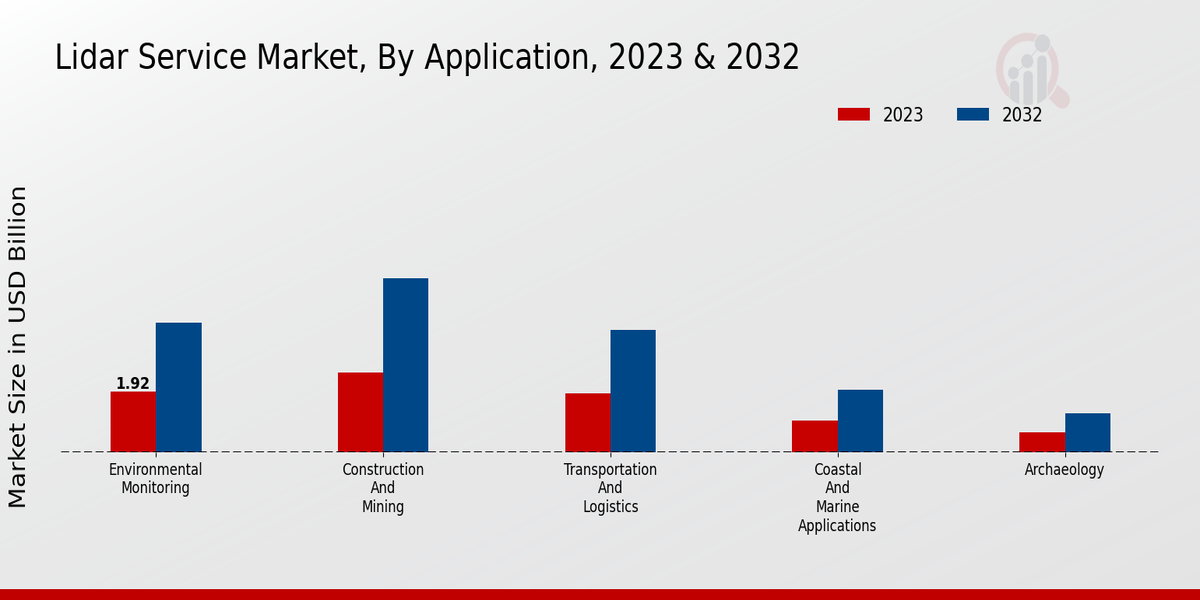Advancements in Autonomous Vehicles
The LiDAR Service Market is significantly influenced by advancements in autonomous vehicle technology. As automotive manufacturers increasingly integrate LiDAR systems for navigation and obstacle detection, the demand for high-resolution mapping and real-time data processing is escalating. This integration is essential for ensuring safety and efficiency in self-driving cars. Market analysis suggests that the automotive sector is expected to account for a substantial share of the LiDAR market, with projections indicating a growth rate of approximately 20% annually. This trend underscores the critical role of LiDAR services in the development of next-generation transportation solutions.
Expansion of Urban Planning Initiatives
The LiDAR Service Market is benefiting from the expansion of urban planning initiatives across various regions. City planners and architects are increasingly utilizing LiDAR technology to create accurate 3D models of urban landscapes, which facilitate better decision-making in infrastructure development. The ability to capture detailed spatial data allows for improved land use planning, environmental assessments, and disaster management strategies. Recent statistics indicate that the urban planning sector is projected to invest heavily in LiDAR services, with an expected growth rate of around 12% over the next few years. This investment reflects a growing recognition of the value of precise data in shaping sustainable urban environments.
Rising Demand for Precision Agriculture
The LiDAR Service Market is experiencing a notable surge in demand due to the increasing need for precision agriculture. Farmers and agricultural companies are leveraging LiDAR technology to enhance crop management, optimize irrigation, and improve yield forecasting. This technology allows for detailed topographical mapping and soil analysis, which are crucial for effective land use. According to recent data, the adoption of LiDAR in agriculture is projected to grow at a compound annual growth rate of over 15% in the coming years. This trend indicates a shift towards data-driven farming practices, where LiDAR services play a pivotal role in maximizing productivity and sustainability in agricultural operations.
Integration of LiDAR with GIS Technologies
The LiDAR Service Market is experiencing a transformative phase with the integration of LiDAR technology and Geographic Information Systems (GIS). This synergy enhances data analysis capabilities, allowing for more comprehensive spatial analysis and visualization. The combination of LiDAR and GIS is particularly beneficial in sectors such as urban planning, forestry, and disaster management. Market trends suggest that this integration could lead to a growth rate of approximately 15% in the LiDAR services sector. As organizations seek to leverage advanced analytics for better decision-making, the demand for integrated LiDAR and GIS solutions is likely to rise significantly.
Increased Focus on Environmental Conservation
The LiDAR Service Market is witnessing growth driven by an increased focus on environmental conservation efforts. Organizations and governments are employing LiDAR technology for habitat mapping, forest management, and biodiversity assessments. This technology provides critical insights into vegetation structure and land cover changes, which are essential for effective conservation strategies. Data indicates that the environmental monitoring sector is likely to expand its use of LiDAR services, with a projected growth rate of 10% annually. This trend highlights the importance of accurate data in addressing environmental challenges and promoting sustainable practices.


















Leave a Comment